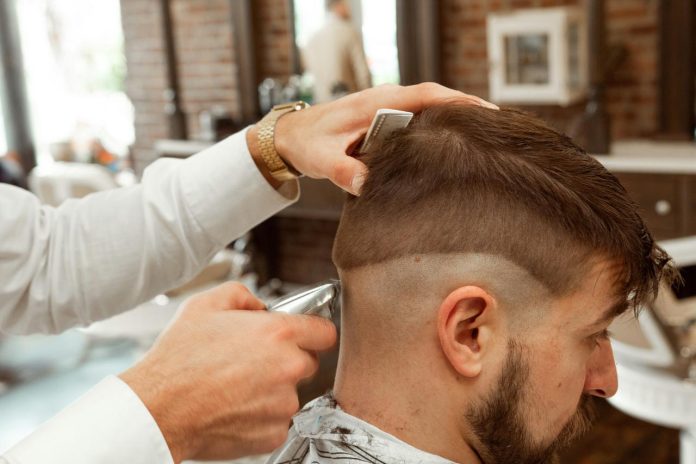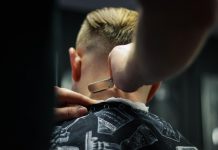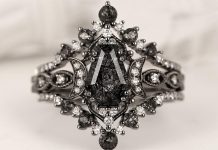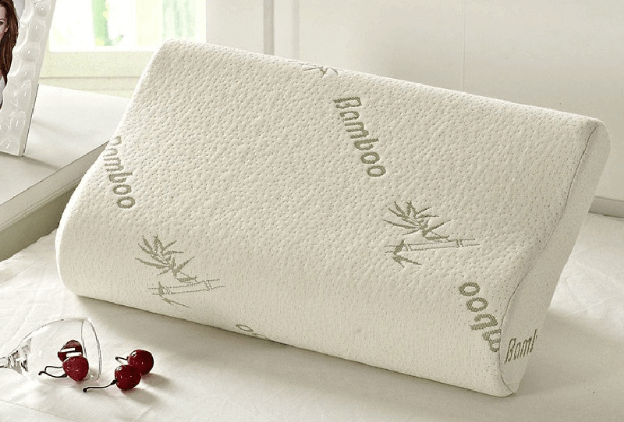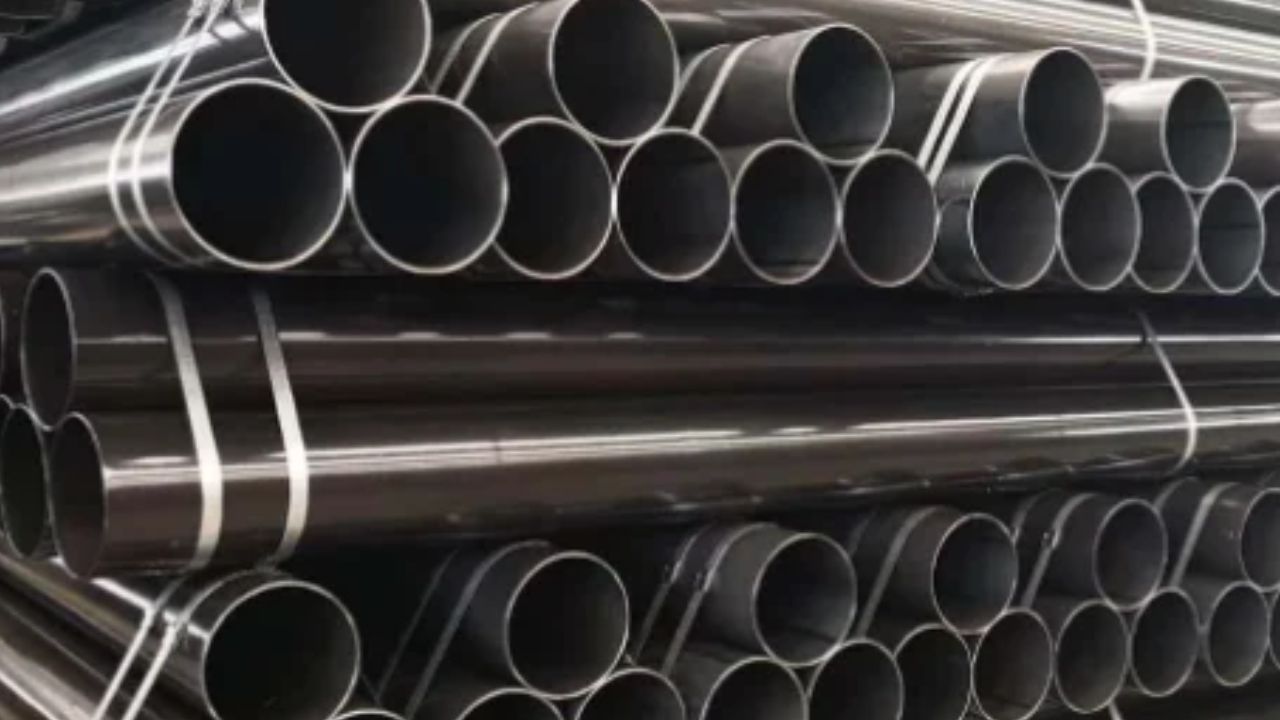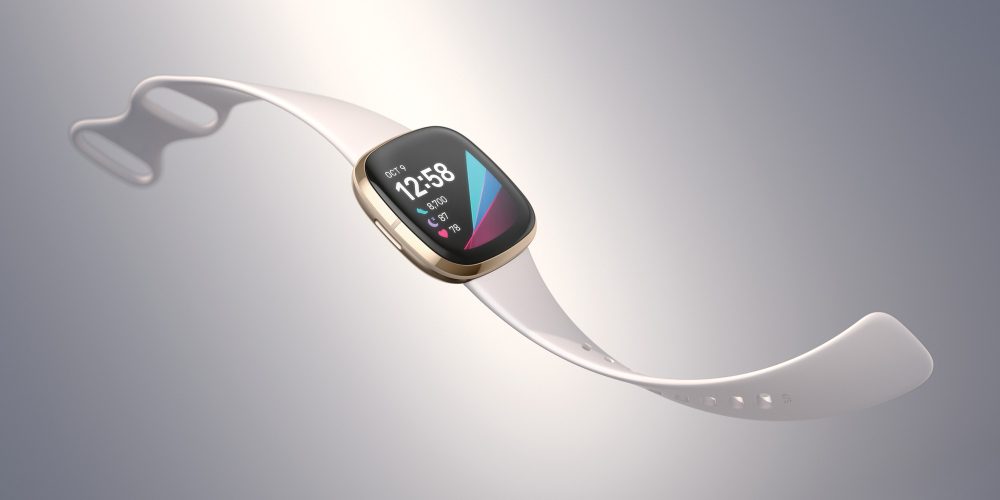The crew cut continues its reign as the ultimate low-maintenance, high-impact hairstyle for modern men. Unlike fleeting trends that disappear with each season, this timeless cut adapts and evolves, making it the perfect choice for professionals, athletes, and style-conscious individuals alike.
Essential Knowledge Before Your Cut
Face Shape Compatibility Guide
Understanding your face shape determines which crew cut variation will enhance your features most effectively. Round faces benefit from added height through longer top sections, while square faces can embrace shorter, more uniform cuts that don’t add unnecessary width.
Oval faces have the luxury of versatility – nearly every crew cut style works well. Long faces should avoid extremely short cuts that can exaggerate facial length. Heart-shaped faces look best with crew cuts that add width at the temples, typically through slightly longer side sections.
Professional barbers recommend taking high-quality photos of your face from multiple angles before deciding on a specific crew cut for different face shapes. This prevents miscommunication and ensures optimal results.
Hair Texture Considerations
Your natural hair texture plays a crucial role in determining which crew cut hairstyles for men 2025 will look best and be easiest to maintain. Fine hair benefits from textured cuts that create the illusion of thickness, while thick hair can handle more dramatic fades and shorter lengths.
Coarse hair naturally holds its shape well in crew cuts but may require stronger styling products for sleeker looks. Wavy hair creates natural movement and texture that many men try to achieve artificially. Straight hair offers the most styling flexibility but may appear flat without proper texturizing techniques.
Cowboys and other professionals working in demanding environments often choose crew cuts specifically because the style works with, not against, natural hair patterns. This reduces daily styling time while maintaining a professional appearance.
Commitment Level and Maintenance Reality
The crew cut demands regular maintenance – there’s no way around this fact. Most styles require touch-ups every 2-3 weeks to maintain their sharp appearance. Budget $25-40 per cut at quality barber shops, with higher costs in major metropolitan areas.
Time commitment varies by style complexity. Basic crew cuts need 3-5 minutes of morning styling, while textured or styled variations may require 10-15 minutes. Consider your lifestyle honestly – a high-maintenance cut becomes a daily frustration if you prefer minimal grooming routines.
Factor in seasonal changes too. Summer humidity affects styling hold, while winter hats can disrupt carefully crafted textures. Professional stylists recommend having two go-to styling approaches: one for regular days and a simplified version for challenging weather.
The 13 Must-Know Crew Cut Styles
1. Classic Crew Cut: The Foundation Style
Length Specifications
The classic crew cut establishes the template all other variations build upon. Top hair measures approximately 1.5-2 inches at the front, gradually tapering to 0.5-1 inch toward the crown. Sides start at about 0.25 inches near the ears, maintaining consistent length up to the temple area.
This measurement precision matters more than many realize. Too long, and you’re entering Ivy League territory. Too short, and it becomes a buzz cut. The classic crew cut maintenance tips emphasize this balance – it’s the foundation that makes all other variations possible.
Professional barbers use these measurements as starting points, adjusting based on individual head shape and hair characteristics. The goal is creating a proportional look that enhances natural features rather than fighting against them.
Who It Works For
The classic crew cut works exceptionally well for men with strong jawlines and defined facial features. Its clean lines complement professional environments while maintaining enough character to avoid the stark severity of military cuts.
Men with receding hairlines often find this style particularly flattering because the uniform length distribution doesn’t draw attention to hairline changes. The style also works well for active individuals – athletes, military personnel, and outdoor workers appreciate its practical benefits.
Age versatility is another major advantage. This cut transitions seamlessly from college years through retirement, requiring only minor adjustments for changing hair density and lifestyle needs.
Styling Requirements
Daily styling involves applying a small amount of pomade or styling cream to damp hair, working from back to front. The key is even distribution – concentrate on creating uniform texture rather than distinct styling patterns.
For professional settings, use a medium-hold product that provides structure without obvious shine. Casual environments allow for more experimental approaches – sea salt sprays can add texture, while stronger gels create more dramatic definition.
The classic crew cut responds well to blow-drying techniques. Use a small round brush to direct hair forward and slightly upward, creating subtle lift that enhances the style’s inherent proportions.
Weekly Maintenance
Between professional cuts, maintain the style through daily washing with quality shampoo and conditioner. Avoid over-washing, which strips natural oils and makes styling more difficult.
Weekly deep conditioning treatments help maintain hair health, especially important for shorter styles where damaged hair is immediately visible. Use a boar bristle brush daily to distribute natural oils and maintain smooth texture.
Monitor growth patterns carefully. The classic crew cut starts looking unkempt when top length exceeds 2.5 inches or side length grows beyond 0.5 inches. Professional maintenance every 2-3 weeks keeps the cut looking intentional rather than overgrown.
2. Military Buzz Crew: Discipline Meets Style
Regulation Standards
Military crew cut regulations guide specifies exact parameters that balance professional appearance with practical functionality. Top hair cannot exceed 2 inches in length, with sides and back maintaining no more than 1/8 inch above the ears.
The military approach prioritizes uniformity and cleanliness over individual expression. However, within these constraints, skilled barbers can create subtle variations that enhance individual features while meeting regulatory requirements.
Understanding these standards helps civilian clients communicate effectively with barbers. Many professionals appreciate the precision and intentionality of military-inspired cuts, even when not bound by actual regulations.
Precision Cut Technique
The military buzz crew requires exceptional technical skill from barbers. Every line must be perfectly straight, every transition seamlessly blended. There’s no room for uneven sections or imprecise fading – mistakes are immediately obvious.
Professional barbers use multiple clipper guards and careful hand-cutting techniques to achieve the required precision. The process typically takes 45-60 minutes, significantly longer than basic buzz cuts that might be completed in 15-20 minutes.
This attention to detail justifies higher pricing for military-style crew cuts. The investment pays off in longevity – precision cuts maintain their appearance longer and grow out more gracefully than hastily executed alternatives.
No-Nonsense Appeal
The military buzz crew appeals to men who prioritize function over fashion trends. It’s the ultimate practical haircut – requires minimal daily maintenance, performs well in all weather conditions, and looks appropriate in virtually every professional setting.
This style particularly suits men with strong facial features and confident personalities. The stark simplicity demands presence and self-assurance – it’s not a cut for those seeking to blend into the background.
Many executives and professionals choose military-inspired crew cuts specifically because they communicate reliability, attention to detail, and respect for traditional values. In conservative industries, this messaging advantage can impact career progression.
5-Minute Morning Routine
The military buzz crew’s greatest practical advantage is its minimal styling requirement. Most mornings require only a quick shower wash, followed by towel drying and possibly a small amount of light styling cream.
For extra polish, spend 30 seconds with a fine-tooth comb, directing hair forward and slightly upward. This subtle styling creates clean lines that enhance the cut’s inherent precision.
Keep styling products minimal and functional. A small tube of medium-hold cream handles both daily styling and special occasion needs. This simplicity reduces travel packing and eliminates decision fatigue from complex styling routines.
3. Ivy League Gentleman’s Cut
The Academic Edge
The Ivy League represents the longest acceptable variation within crew cut family styling. Top hair measures 2-4 inches, allowing for side parts and more sophisticated styling options while maintaining the crew cut’s essential character.
This style originated in prestigious American universities where students needed haircuts that looked polished for formal occasions yet remained practical for daily campus life. The balance between sophistication and functionality continues to define the style today.
Modern interpretations often incorporate subtle fading techniques that weren’t part of the original academic styling. These updates maintain the cut’s traditional elegance while adding contemporary relevance for today’s professional environments.
Versatile Length Options
The Ivy League’s extended top length creates multiple styling possibilities within a single cut. Morning styling can emphasize a clean side part for business meetings, while evening styling might involve tousled textures for casual social settings.
This versatility makes the Ivy League particularly valuable for men whose schedules demand different looks throughout the day. Teachers, sales professionals, and consultants benefit from being able to adjust their appearance based on audience expectations.
Length flexibility also extends the time between professional maintenance appointments. While traditional crew cuts require cutting every 2-3 weeks, Ivy League styles can stretch to 4-5 weeks while maintaining acceptable appearance.
Professional Styling Tips
Successful Ivy League styling depends heavily on part placement and product selection. The part should align with your natural hair whorl patterns – forcing parts against natural growth creates styling difficulties and unnatural-looking results.
For business environments, use pomade or styling cream that provides strong hold without obvious shine. Work product through damp hair, creating the part first, then styling each section separately for maximum control.
Evening styling allows for more relaxed approaches. Sea salt sprays can create textured, casual looks that maintain sophistication without formal rigidity. The key is understanding when each approach is appropriate.
Transition Possibilities
The Ivy League serves as an excellent transition style for men growing out shorter cuts or preparing to try longer hairstyles. The extended top length provides styling practice and helps determine whether longer hair suits your lifestyle and preferences.
Conversely, men with longer hairstyles can use the Ivy League as a stepping stone toward shorter cuts. The process feels less dramatic than jumping directly to buzz cut lengths while providing most of the crew cut’s practical benefits.
This transitional quality makes the Ivy League valuable for men experiencing lifestyle changes – new jobs, relationship status, or fitness goals that might influence optimal hair length preferences.
4. High Fade Crew: Maximum Impact
Fade Height Dynamics
The high fade crew creates dramatic contrast by starting the fade at or above the temple level. This aggressive approach maximizes the difference between top length and side length, creating a bold, contemporary appearance that commands attention.
Modern crew cut fade styles often incorporate high fades because they photograph well for social media and create striking silhouettes. The technique requires exceptional barber skill – high fades show every imperfection and grow out less gracefully than conservative alternatives.
Understanding fade height psychology helps in style selection. High fades communicate confidence and willingness to stand out, making them excellent choices for creative industries and leadership positions where visibility is advantageous.
Contrast Creation
The high fade’s primary appeal lies in its dramatic contrast ratios. Top hair might measure 2-3 inches while sides fade to skin level, creating maximum visual impact within crew cut parameters.
This contrast serves practical purposes beyond aesthetics. The stark difference between lengths makes the style immediately recognizable and memorable – valuable for professionals building personal brands or seeking to make strong first impressions.
However, high contrast also means faster apparent growth rates. What looks perfectly balanced on day one can appear uneven within 7-10 days, requiring more frequent maintenance than subtle fade variations.
Barber Communication Guide
Communicating high fade specifications requires precision and shared vocabulary. Use terms like “skin fade starting at temple level” rather than vague descriptions like “short on the sides.”
Bring reference photos showing the exact fade height and contrast level you want. Even experienced barbers interpret verbal descriptions differently, and high fades offer little room for correction once cut.
Discuss maintenance expectations upfront. Quality barbers will explain how often you’ll need touch-ups and what the grow-out process looks like. This prevents unrealistic expectations and post-cut disappointment.
Two-Week Touch-Up Cycle
High fade crew cuts demand frequent maintenance to preserve their impact. Most men need professional touch-ups every 10-14 days to maintain the sharp contrast that defines the style.
Budget accordingly – frequent barbershop visits can cost $100-150 monthly in major markets. Some men opt for home touch-up tools, but achieving professional-quality high fades requires considerable skill and practice.
Consider your schedule realistically. If work travel or personal commitments make regular barber appointments difficult, high fade styles may not be practical despite their visual appeal.
5. Mid Drop Fade Crew: The Balanced Choice
Drop Fade Anatomy
The mid drop fade follows the natural curve behind the ear, creating a more organic transition than straight-line fades. This technique works particularly well with crew cuts because it maintains the style’s classic proportions while adding contemporary sophistication.
Drop fades require advanced barber skills but grow out more gracefully than high fades. The curved transition line follows natural head contours, making slight imperfections less noticeable than geometric fade patterns.
Understanding drop fade anatomy helps in selecting the right barber. Not all professionals have mastered this technique – it’s worth researching specialists in your area rather than settling for basic fade capabilities.
Universal Face Shape Appeal
Mid drop fades complement virtually every face shape because they follow natural anatomical curves rather than imposing geometric patterns. This universality makes the style an excellent choice for men uncertain about which crew cut variation suits them best.
The balanced approach works particularly well for men with average proportions – neither extremely tall nor short, with standard head shapes and facial features. It’s the “safe” choice that delivers contemporary style without risk of unflattering results.
This versatility extends to age ranges too. Mid drop fade crew cuts work for teenagers through middle age, requiring only minor adjustments for changing hair characteristics and lifestyle needs.
Styling Flexibility
The mid drop fade’s balanced proportions allow for multiple styling approaches within a single cut. Conservative styling emphasizes the clean fade lines, while textured approaches can create more casual, relaxed appearances.
Product selection influences the overall effect significantly. Light-hold products maintain natural texture and movement, while stronger formulations create more structured, formal looks suitable for business environments.
This flexibility proves valuable for men whose daily schedules include multiple contexts – business meetings followed by social events, or professional responsibilities combined with active lifestyle pursuits.
Grow-Out Timeline
Mid drop fades maintain acceptable appearance for 3-4 weeks, longer than high fades but shorter than low tapers. This moderate maintenance schedule balances contemporary style with practical convenience.
The curved fade line grows out more naturally than geometric patterns, reducing the stark line demarcation that makes other fades look obviously overgrown. This graceful aging extends the viable period between professional touch-ups.
Plan maintenance appointments based on your most important events. Schedule cuts 3-5 days before crucial meetings or social occasions, allowing the cut to settle while ensuring optimal appearance when it matters most.
6. Low Taper Crew: Subtle Sophistication
Conservative Gradient
The low taper crew maintains longer hair on the sides, creating gradual transitions that appear natural and understated. This conservative approach suits professional environments where dramatic styling might be inappropriate or distracting.
Low tapers work exceptionally well for men transitioning from longer hairstyles or those working in traditional industries. The subtle gradient provides crew cut benefits – easy maintenance and clean appearance – without the stark contrast of aggressive fades.
Understanding the difference between tapers and fades helps in style communication. Tapers blend lengths gradually over larger areas, while fades create sharp transitions over shorter distances. Both techniques have appropriate applications.
Office-Appropriate Styling
Conservative work environments often favor subtle styling that doesn’t distract from professional competence. Low taper crew cuts excel in these settings because they demonstrate attention to grooming while remaining understated.
The styling approach should emphasize cleanliness and precision rather than trendy textures or dramatic contrasts. Use minimal product – just enough to control flyaways and maintain smooth texture without obvious shine or stiffness.
This conservative styling translates well across cultures and industries. International business, finance, law, and traditional corporate environments all appreciate the low taper’s professional sophistication.
Natural Transition Points
Low tapers follow natural hair growth patterns, creating transitions that appear organic rather than artificially imposed. This natural approach results in cuts that age gracefully and grow out without obvious demarcation lines.
The technique requires understanding of individual hair characteristics – growth patterns, natural density variations, and head shape influences. Skilled barbers adjust the taper’s length and gradient to complement these natural factors.
This personalized approach often means slightly higher costs and longer appointment times, but the results justify the investment through extended wear and more natural appearance.
Monthly Maintenance Plan
Low taper crew cuts can maintain acceptable appearance for 4-5 weeks, making them among the most economical crew cut variations for long-term maintenance costs.
The gradual transitions mean growth appears natural rather than unkempt, extending the period between necessary touch-ups. This makes low tapers excellent choices for busy professionals or budget-conscious clients.
Schedule maintenance based on your natural hair growth rate, which typically averages 0.5 inches monthly. Most men find optimal timing involves cuts every 4-6 weeks, depending on desired precision level.
7. Skin Fade Crew: Bold Statement
Zero to Hero Technique
The skin fade crew represents the most dramatic contrast possible within crew cut styling – hair transitions from full length on top to completely bare skin on the sides. This “zero to hero” approach creates maximum visual impact while maintaining crew cut proportions.
Achieving perfect skin fades requires exceptional barber skill and specialized equipment. The technique involves multiple clipper guards, careful hand-cutting, and often finishing with straight razor work to achieve truly smooth skin transitions.
This textured crew cut with skin fade variation has gained popularity through social media exposure and celebrity adoption. However, the dramatic look requires commitment to frequent maintenance and suits only certain face shapes and lifestyles.
Contrast Maximization
Skin fade crew cuts create the ultimate contrast ratio – from 2-3 inches of hair on top to complete baldness on the sides. This dramatic difference ensures the style is immediately noticeable and memorable in any setting.
The extreme contrast serves practical purposes beyond aesthetics. Men with thinning hair often choose skin fades because the bare sides create optical illusions that make remaining hair appear denser and healthier.
However, maximum contrast also means maximum maintenance requirements. Even 3-4 days of growth can significantly diminish the style’s impact, requiring more frequent touch-ups than any other crew cut variation.
Frequent Refresh Needs
Skin fade crew cuts typically require professional maintenance every 7-10 days to maintain their dramatic appearance. This frequency makes them among the most expensive haircut options for long-term maintenance.
The rapid loss of impact stems from the contrast principle – any visible growth on previously bare skin immediately reduces the style’s dramatic effect. Unlike tapered styles that age gradually, skin fades lose their appeal quickly.
Consider your lifestyle and budget carefully before committing to skin fade maintenance. The style demands both time and financial resources that may not be sustainable for all men.
Home Touch-Up Tips
While professional maintenance remains essential, some home care can extend the period between barbershop visits. Electric razors designed for head shaving can maintain clean skin areas, though they won’t achieve the precision of professional work.
Focus home maintenance on the lowest sections where stubble appears first. Use quality electric razors with multiple guards to avoid accidentally cutting too high into the transition zones.
However, be conservative with DIY touch-ups. Mistakes in skin fade maintenance are immediately visible and often require professional correction, potentially costing more than regular maintenance appointments.
8. Textured Top Crew: Natural Movement
Texture Enhancement Methods
Modern textured crew cuts embrace natural hair movement rather than forcing artificial uniformity. Barbers use point-cutting, razor work, and strategic layering to enhance existing hair characteristics while maintaining crew cut proportions.
The texturizing process requires understanding individual hair properties – fine hair needs different techniques than coarse hair, while straight hair responds differently than naturally wavy textures.
Professional texturizing distinguishes quality crew cuts from basic buzz work. The added dimension and movement create visual interest while maintaining the style’s practical benefits of easy maintenance and professional appearance.
Sea Salt Spray Application
Sea salt sprays have revolutionized textured crew cut styling by providing natural-looking hold without the stiffness of traditional gels or pomades. The product enhances existing texture while adding subtle grip for styling control.
Apply sea salt spray to damp hair, scrunch gently to encourage natural movement, then air dry or use a diffuser on low heat. The result is effortlessly tousled texture that looks naturally windswept rather than artificially styled.
Quality sea salt sprays contain nourishing ingredients that protect hair health while providing styling benefits. Avoid products with excessive alcohol content that can dry hair and scalp over time.
Effortless Morning Style
The textured crew cut’s primary appeal lies in its low-maintenance styling requirements. Most mornings involve simply washing, applying product to damp hair, and allowing natural drying to create the desired texture.
For extra definition, use fingers to scrunch and shape while hair is still damp. This natural approach creates organic-looking texture that appears unstudied and masculine.
The key is working with your hair’s natural patterns rather than against them. Understand your growth directions and natural texture, then choose products and techniques that enhance rather than fight these characteristics.
Weather-Proof Techniques
Textured crew cuts perform well in various weather conditions because the natural movement accommodates environmental factors rather than fighting them. Wind and humidity enhance the tousled effect rather than destroying carefully constructed styling.
For extreme weather conditions, adjust product strength accordingly. High humidity requires stronger hold products, while dry climates benefit from moisturizing formulations that prevent static and flyaways.
The natural texture approach means slight imperfections actually enhance the style’s appeal. This forgiving quality makes textured crew cuts excellent choices for active lifestyles and unpredictable schedules.
9. Spiky Modern Crew: Edgy Energy
Creating Defined Spikes
Modern spiky crew cuts update the classic punk aesthetic with contemporary sophistication. The technique involves creating distinct hair spikes while maintaining crew cut proportions and professional acceptability.
Achieving defined spikes requires proper cutting techniques – hair must be layered to varying lengths to create natural spike formations when styled. Simple buzz cuts cannot achieve this effect regardless of product strength.
The modern approach emphasizes subtlety over extreme drama. Contemporary spiky crew cuts suggest edginess without appearing unprofessional or age-inappropriate.
Product Strength Guide
Spiky styling demands stronger hold products than most crew cut variations. Wax-based pomades, strong-hold gels, and specialized spiking products provide the necessary grip to maintain spike definition throughout the day.
Product application technique matters significantly. Apply to slightly damp hair, work through evenly, then use fingertips to create individual spikes by twisting and lifting small sections upward.
Avoid over-application, which creates stiff, unnatural appearance. Start with small amounts and add gradually until achieving desired hold strength. Quality products provide strong hold without visible residue or helmet-like stiffness.
Day to Night Transformation
Spiky crew cuts offer unique versatility – the same cut can appear conservative for business environments or edgy for social settings, depending entirely on styling approach.
For professional settings, dampen styled hair and comb smooth using minimal product for subtle texture without obvious spikes. This transformation takes less than five minutes and requires no additional products.
Evening styling involves reactivating existing product with damp hands, then reshaping spikes for more dramatic effect. The same cut serves multiple purposes throughout the day.
Age-Appropriate Variations
Spiky crew cuts require careful calibration to remain age-appropriate. Teenagers can embrace dramatic spike heights and edgy styling, while mature professionals need subtler approaches that suggest texture without obvious punk influences.
The key is spike height and definition level. Conservative spiky crew cuts create gentle texture and movement, while aggressive versions produce distinct, separated spikes that command attention.
Consider your professional environment and personal style carefully. Some industries and social circles embrace edgy styling, while others require more conservative approaches even within creative spike variations.
10. Wavy Crew Cut: Embracing Natural Texture
Wave Pattern Enhancement
Men with natural wave patterns often struggle with short haircuts that eliminate their hair’s distinctive character. Wavy crew cuts preserve and enhance natural texture while providing the practical benefits of shorter styling.
The key lies in cutting techniques that work with wave patterns rather than against them. Experienced barbers understand how waves behave at different lengths and can predict optimal cutting approaches for individual hair characteristics.
Crew cut haircut for thick hair with natural waves requires particular attention to bulk reduction without texture elimination. Strategic thinning and layering maintain wave patterns while reducing excessive density that can appear overwhelming at crew cut lengths.
Moisture Balance Strategy
Wavy hair requires careful moisture management to prevent frizz while maintaining wave definition. Natural waves need more hydration than straight hair but less than tightly curled textures.
Use sulfate-free shampoos that cleanse without stripping natural oils, followed by lightweight conditioners that provide moisture without weighing down waves. Deep conditioning treatments once weekly help maintain optimal hair health.
Leave-in conditioners and curl-enhancing creams can help define wave patterns while providing necessary moisture. Apply to damp hair and scrunch gently to encourage natural wave formation.
Anti-Frizz Solutions
Humidity poses the greatest challenge for wavy crew cuts. Natural waves tend to expand and frizz in humid conditions, potentially destroying the style’s clean appearance.
Anti-frizz serums and humidity-blocking products create protective barriers that preserve wave definition even in challenging weather. Apply sparingly to avoid weighing down hair or creating greasy appearance.
Microfiber towels or cotton t-shirts provide gentler drying than traditional terry cloth towels, which can rough up hair cuticles and increase frizz potential. Pat dry rather than rubbing vigorously.
Seasonal Adjustments
Wavy crew cuts may require seasonal styling adjustments to accommodate changing weather patterns and humidity levels. Summer styling often emphasizes definition and frizz control, while winter focuses on moisture and static prevention.
Summer products typically include stronger hold formulations and humidity resistance, while winter styling benefits from moisturizing ingredients and static-fighting properties.
Consider seasonal cutting schedules too. Many men prefer slightly longer wavy crew cuts in winter for added warmth and shorter versions in summer for cooling and easier maintenance.
11. Side Part Crew: Business Ready
Part Placement Science
Professional side part crew cuts require precise part placement that complements natural hair growth patterns and facial features. The part should align with the hair’s natural whorl patterns for easiest maintenance and most natural appearance.
Generally, parts work best when placed approximately 1-2 inches from the center of the forehead, but individual variations in head shape and hair characteristics may require adjustments. Professional barbers assess these factors during consultation.
The crew cut vs buzz cut comparison often centers on styling flexibility – crew cuts allow for part styling while buzz cuts eliminate this option entirely. This versatility makes crew cuts more suitable for professional environments requiring varied appearances.
Sharp Line Creation
Creating crisp, professional part lines requires both proper cutting and daily styling techniques. The initial cut establishes the part’s location and removes bulk that might interfere with clean line formation.
Daily part creation involves using a fine-tooth comb on slightly damp hair, drawing a precise line from front to back. Follow immediately with styling product application to lock the part in place.
For extra precision, some men use straight razors or precision trimmers to maintain perfectly sharp part lines. This technique requires skill and caution but creates exceptionally clean results for important business occasions.
Formal Event Styling
Side part crew cuts excel in formal business and social settings where polished appearance is essential. The clean lines and professional styling communicate attention to detail and respect for occasion importance.
For black-tie events or crucial business meetings, consider additional styling steps: use stronger hold products, ensure perfect part precision, and finish with light hairspray for extended hold duration.
Professional styling may be worthwhile for particularly important events. Many barber shops offer special occasion styling services that ensure optimal appearance when stakes are highest.
Part Maintenance Schedule
Side parts require daily attention to maintain their crisp appearance. Morning styling should include part recreation, even if hair hasn’t been washed, to ensure clean lines throughout the day.
Weekly deep conditioning helps maintain hair health and styling flexibility. Healthy hair holds parts better and responds more predictably to styling products and techniques.
Monthly professional maintenance should include part line cleanup and any necessary adjustments to accommodate changing hair growth patterns or length preferences.
12. Creative Line Crew: Artistic Expression
Design Pattern Options
Creative line crew cuts incorporate artistic elements through precisely cut designs, patterns, or geometric shapes worked into the fade areas. These designs range from simple single lines to complex geometric patterns.
Popular design options include racing stripes, zigzag patterns, tribal designs, and personal symbols or initials. The key is choosing designs that complement the overall crew cut proportions without overwhelming the style’s essential character.
boys crew cut styles trending often incorporate creative line elements as young men seek ways to express individuality within structured haircut parameters. These designs provide creative outlet while maintaining general crew cut acceptability.
Barber Artist Selection
Not all barbers possess the artistic skills necessary for quality creative line work. Research local specialists who demonstrate consistent design capabilities through portfolio examples and client references.
Quality design work requires specialized tools, steady hands, and artistic vision. Expect to pay premium prices for skilled design specialists – their expertise justifies higher costs through superior results.
Schedule design work when you can dedicate adequate time to the appointment. Rushing complex designs leads to inferior results and potential dissatisfaction with permanent modifications to your appearance.
Design Refresh Timeline
Creative designs grow out faster than basic crew cuts because even slight growth can blur precise lines and patterns. Most designs require professional refresh every 7-10 days to maintain crisp appearance.
Plan design timing around important events or periods when you want maximum impact. Avoid scheduling new designs immediately before situations where grown-out patterns might appear unprofessional.
Consider the commitment level carefully. Complex designs demand frequent maintenance and may limit styling flexibility during grow-out periods.
Growing Out Gracefully
Removing creative designs requires strategic planning to avoid awkward transition periods. Some designs can be gradually simplified through successive appointments, while others require complete removal.
Discuss exit strategies with your barber before implementing complex designs. Understanding removal options prevents being trapped in maintenance cycles that become impractical or undesirable.
Simple line designs typically grow out more gracefully than complex patterns, making them better choices for men uncertain about long-term design commitment.
13. Disconnected Crew: Contemporary Edge
Length Contrast Ratios
Disconnected crew cuts create dramatic contrast through abrupt length transitions rather than gradual fades. Top hair might measure 2-3 inches while sides are cut to 1/8 inch or shorter, with minimal blending between lengths.
This bold approach creates striking silhouettes that photograph well and make strong style statements. The disconnected technique has gained popularity through social media influence and celebrity adoption.
Understanding contrast ratios helps in communication with barbers. Specify exact length differences desired and discuss whether subtle connection points might be appropriate for your lifestyle and professional requirements.
Styling Two Zones
Disconnected cuts essentially create two distinct styling zones that require different products and techniques. The longer top section needs styling products and techniques, while short sides require minimal maintenance.
Top section styling might involve pomades, texturizing creams, or volumizing products, depending on desired effect. The contrast between styled top and minimal sides creates the disconnected style’s signature appearance.
This dual-zone approach allows for creative styling flexibility – the top can be styled smooth and professional or textured and casual, while sides remain consistently minimal.
Bold vs Subtle Options
Disconnected crew cuts range from subtle length variations to dramatic contrast statements. Conservative versions might feature 1-2 inch length differences, while bold versions create 3+ inch contrasts.
Workplace appropriateness often determines optimal contrast levels. Creative industries may embrace dramatic disconnection, while traditional businesses prefer subtler length variations that maintain professional appearance.
Consider face shape when selecting contrast levels. Strong facial features can handle bold disconnection, while softer features might benefit from moderate contrast that doesn’t overpower natural proportions.
Transition Strategies
Moving away from disconnected styles requires strategic planning because the abrupt length differences don’t grow out naturally. Professional guidance helps navigate transition periods without awkward intermediate stages.
Options include gradually connecting the disconnected areas through successive appointments, or cutting everything to uniform length and starting fresh with a different crew cut variation.
Plan transition timing around periods when appearance flexibility matters less – vacations, job transitions, or seasonal changes when style experimentation feels more appropriate.
Professional Barber Insights
Communication Keys for Perfect Results
Effective barber communication prevents disappointing results and ensures satisfaction with your crew cut investment. Use specific terminology, bring reference photos, and discuss maintenance expectations upfront.
Describe desired length using measurements rather than vague terms. “Take it down to a 2 on the sides” communicates more clearly than “not too short.” Quality barbers appreciate precision and respond with better results.
Discuss your lifestyle, styling skills, and maintenance commitment honestly. Professional barbers can recommend variations that align with your reality rather than idealized expectations that prove impractical daily.
Red Flags to Avoid
Several warning signs indicate barber shops that may not deliver quality crew cut results. Avoid establishments that don’t offer consultations, seem rushed, or can’t explain their techniques clearly.
Unclean tools, poor lighting, and lack of professional credentials suggest substandard service that could result in poor cuts or health risks. Quality barber shops maintain high sanitation standards and professional atmospheres.
Extremely low prices often indicate inexperienced staff or rushed service that compromises result quality. While expensive doesn’t guarantee quality, professional crew cuts require skill and time that justify reasonable pricing.
Tipping Etiquette and Expectations
Standard tipping for quality crew cuts ranges from 20-25% of service cost, with higher percentages appropriate for exceptional results or additional services like design work or styling consultation.
Consider the total appointment value, including consultation time, precision cutting, and post-cut styling guidance. Quality barbers provide comprehensive service that extends beyond basic cutting.
Build relationships with skilled barbers through consistent tipping and appointment scheduling. Regular clients often receive priority booking, style recommendations, and maintenance reminders that improve long-term satisfaction.
Troubleshooting Common Issues
Fixing a Bad Cut
Bad crew cuts require immediate professional attention to prevent further damage. Avoid attempting DIY corrections, which typically worsen the situation and limit professional correction options.
Document problems with photos from multiple angles to show correction specialists the issues requiring attention. Clear visual information helps professionals develop effective correction strategies.
Understand that correction may require shorter overall length than originally planned. Perfect symmetry and proportion sometimes demand sacrificing desired length to achieve acceptable appearance.
Dealing with Cowlicks
Cowlicks present particular challenges for crew cut styling because shorter lengths provide less weight to control natural growth patterns. Professional barbers can adjust cutting techniques to work with rather than against these patterns.
Identify cowlick locations and growth directions before cutting to inform barbershop strategy discussions. Understanding your natural patterns helps professionals develop realistic expectations and styling approaches.
Styling products can help manage cowlicks, but technique matters more than product strength. Learn to work with natural growth patterns rather than fighting them daily.
Managing Different Growth Rates
Hair grows at different rates across the head, causing crew cuts to lose proportion as some areas outpace others. Understanding these patterns helps predict maintenance timing and styling adjustments.
The crown area typically grows fastest, while sides often maintain length longer. Professional barbers adjust initial cutting to account for these variations and maintain balanced appearance longer.
Track your personal growth patterns over several cutting cycles to optimize maintenance scheduling. Individual variations mean personalized approaches work better than generic timing recommendations.
Long crew cut with taper fade styles often accommodate uneven growth better than dramatic contrast cuts, making them practical choices for men with pronounced growth rate differences across their heads.

